Past, Present & Future
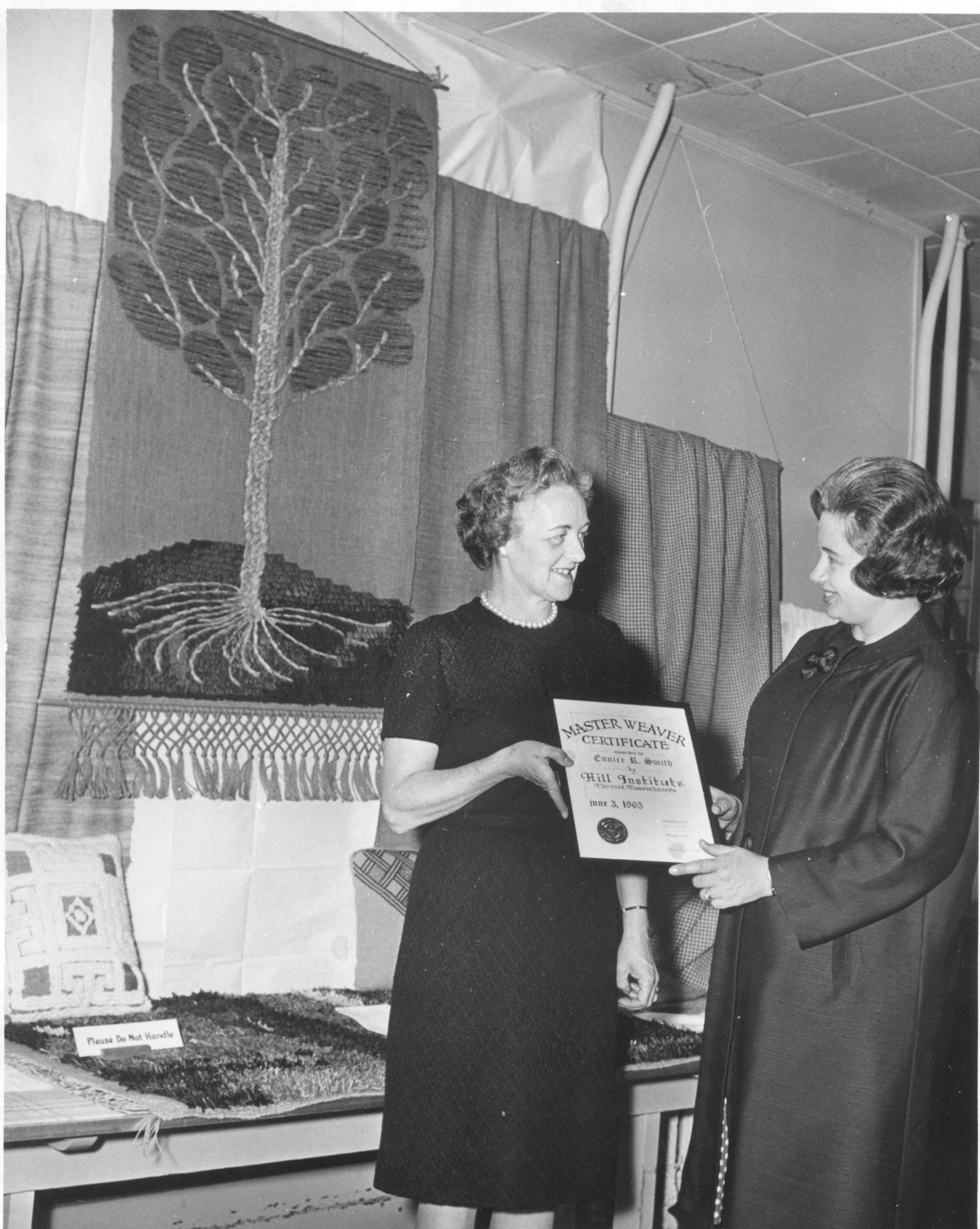 Jeanetta Jones giving Eunice Smith her Master Weaver Certificate in 1965
Jeanetta Jones giving Eunice Smith her Master Weaver Certificate in 1965
Since the holidays I have been working furiously on a presentation for the Handweavers’ Guild of Connecticut which I just completed yesterday. It was a fabulous day. I gave a mini workshop in the morning and then a presentation on The Hill Institute Master Weaver Certification Program after lunch. I agreed to do the program over a year ago, and contacted many weavers I knew who had completed their Master Weaver certificates. I asked for feedback about the Hill program and pictures if they had any. Then I got sidetracked and “didn’t do my homework” for 9-ish months. So, I have been scrambling during all the little interstices from Thanksgiving through Christmas to get my wits about me and think of an approach.
This is where the past the present and the future connect and why it is so important/exciting to have weavers of every generation sharing information and knowledge. I asked my friend Ute Bargmann a.k.a. The Pick-up Queen, a.k.a. The Dimity Queen, a.k.a. (this is my coinage) The Font of Everything You Ever Wanted to Know About Weaving Past, Present & Future about an approach, and instead of telling me how to do it, she offered incredible resources, i.e. pictures of past Master Weavers including the founder and first graduate of Hill, Jeanetta Jones, notebooks of Hill in-class projects, a pamphlet on the history of Hill including pictures of the little kindergarteners who attended the first free kindergarten classes offered in the US at Hill Institute . . . My cup runneth over! Then I met with Laurie Autio (Master Weaver circa 2000) who handed me a huge volume of pictures of past MW shows with names and dates attached – my cup runneth over & over. My friend and most recently anointed Master Weaver, Barbara Hurley lent me her entire collection of notebooks from her four years of classwork to share. All her samples were hemstitched, categorized and put in appropriate notebooks with drafts and were a huge attraction at the presentation . . . (my samples, having been rolled up and put in a huge basket which became the cat’s most favored nap spot would have been much less attractive to view) Thank you Barbara . . . teacher’s pet . . .
Here are a few pics of the work of MW Eunice Smith: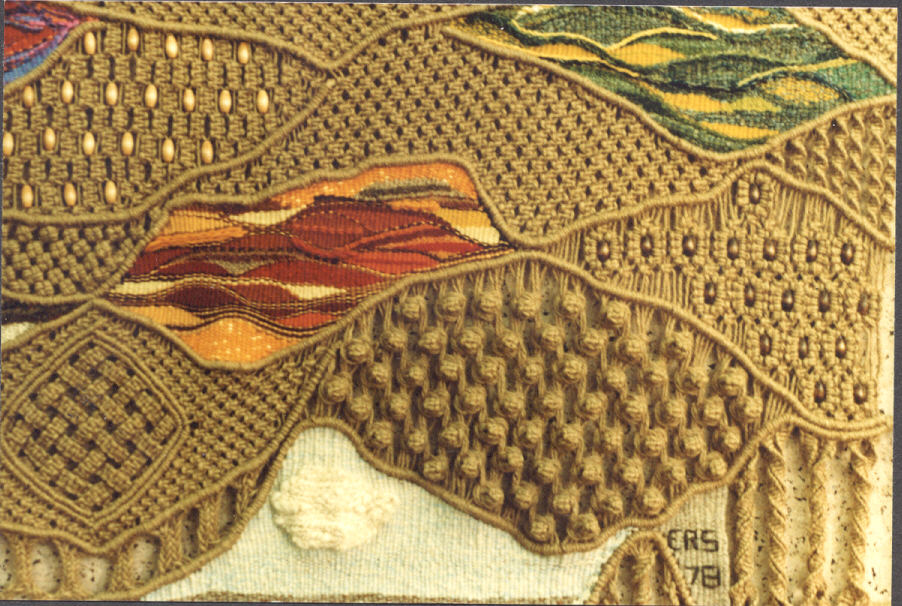
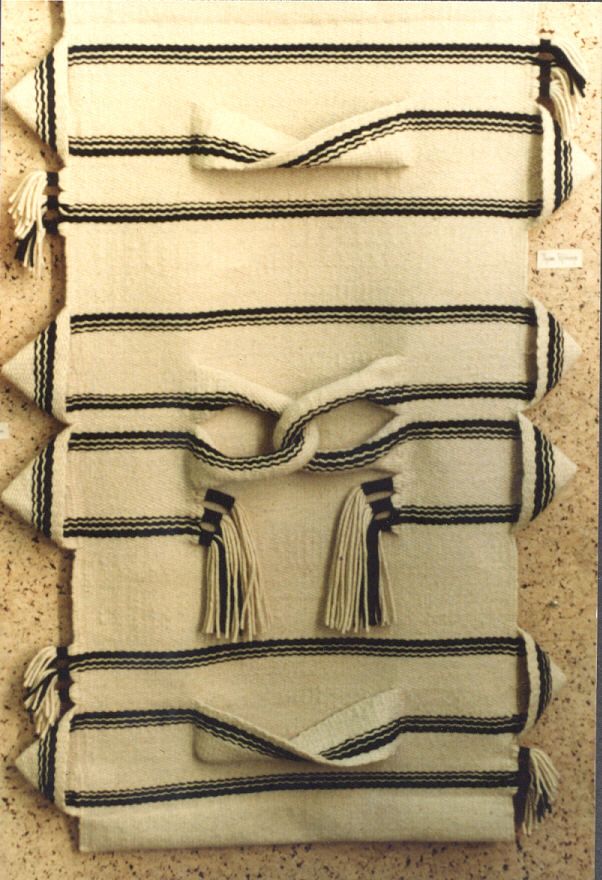

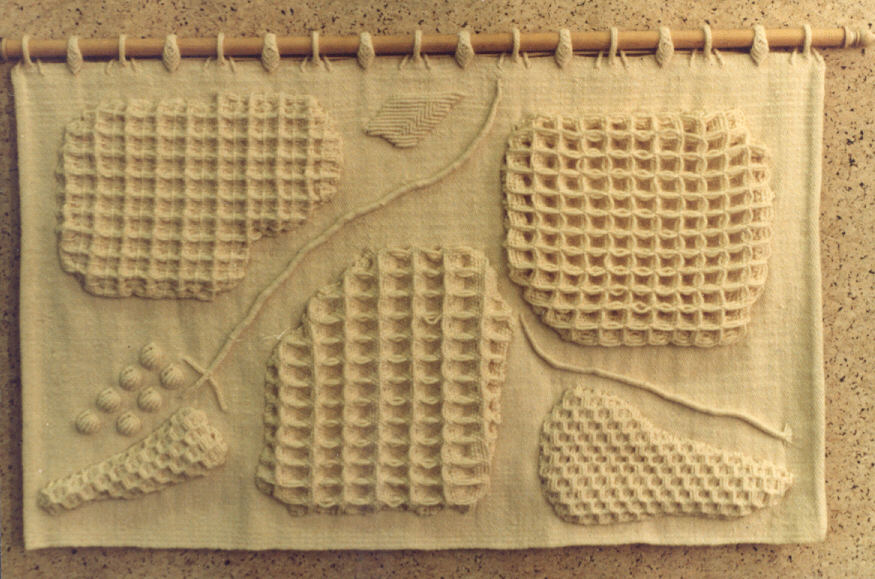 So innovative and playful!
So innovative and playful!
Here is part of Ute’s Master Weaver table.
 You can see why she is the “Pick-up Queen”! As I said in my talk, I feel like the most fortunate weaver in the world to have Ute as a friend and neighbor, and I feel even more fortunate that I didn’t see any of her Master Weaver pieces before I started weaving my projects . . . I don’t think I would have had the chutzpah to continue!
You can see why she is the “Pick-up Queen”! As I said in my talk, I feel like the most fortunate weaver in the world to have Ute as a friend and neighbor, and I feel even more fortunate that I didn’t see any of her Master Weaver pieces before I started weaving my projects . . . I don’t think I would have had the chutzpah to continue!
This is Ute’s Dukagang requirement.
Above and below are Ute’s confronting Dragons with the bobbin lace embellishment.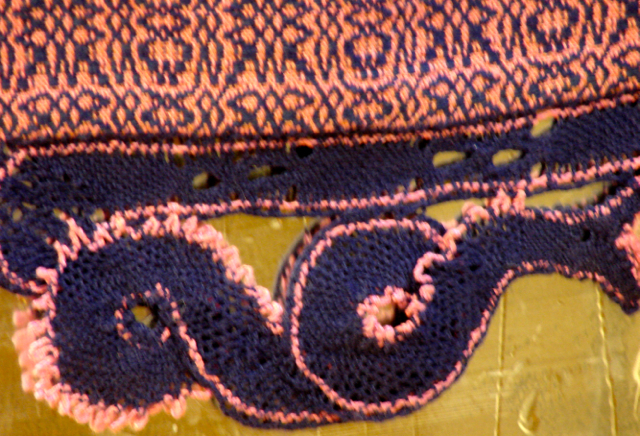
I would love to post my whole slide show which had over 92 images of Master Weavers and their work, but I am short on time and if I don’t get my hands off the computer and onto some threads soon . . .
I am editing a project on double corduroy at the moment and have become fascinated. Peter Collingwood has a fabulous explanation in The Techniques of Rug Weaving. It is a weft-faced structure that allows you to weave pile without knotting. The pile is vertically oriented because it is composed of heavy weft floats that are offset from one another and anchored by tabby picks. The floats are then cut to make pile. The length of the pile can be adjusted by pulling the floats up and the offset makes the pile denser and without discernible vertical lines. So, as soon as I do get off the computer I hope to have some DC to show you.

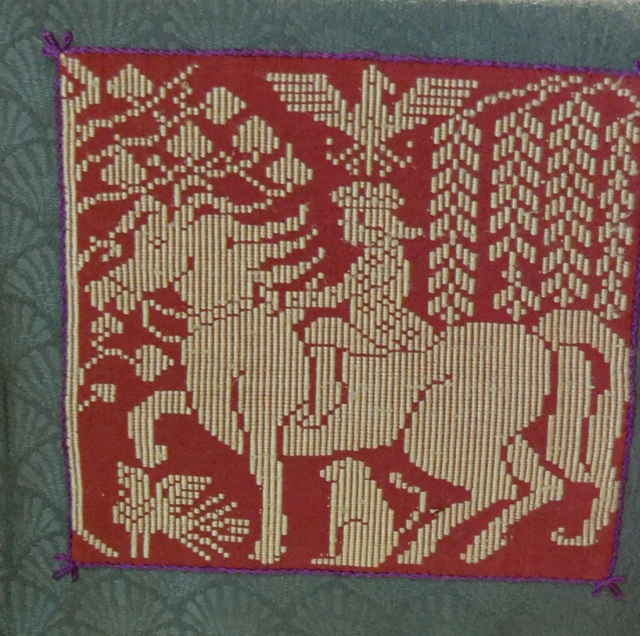
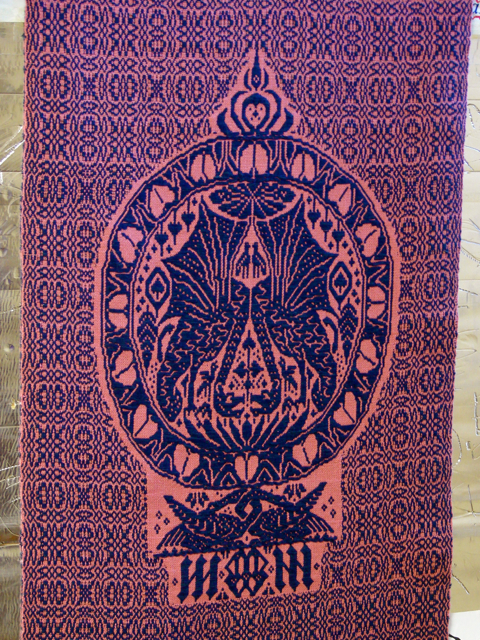
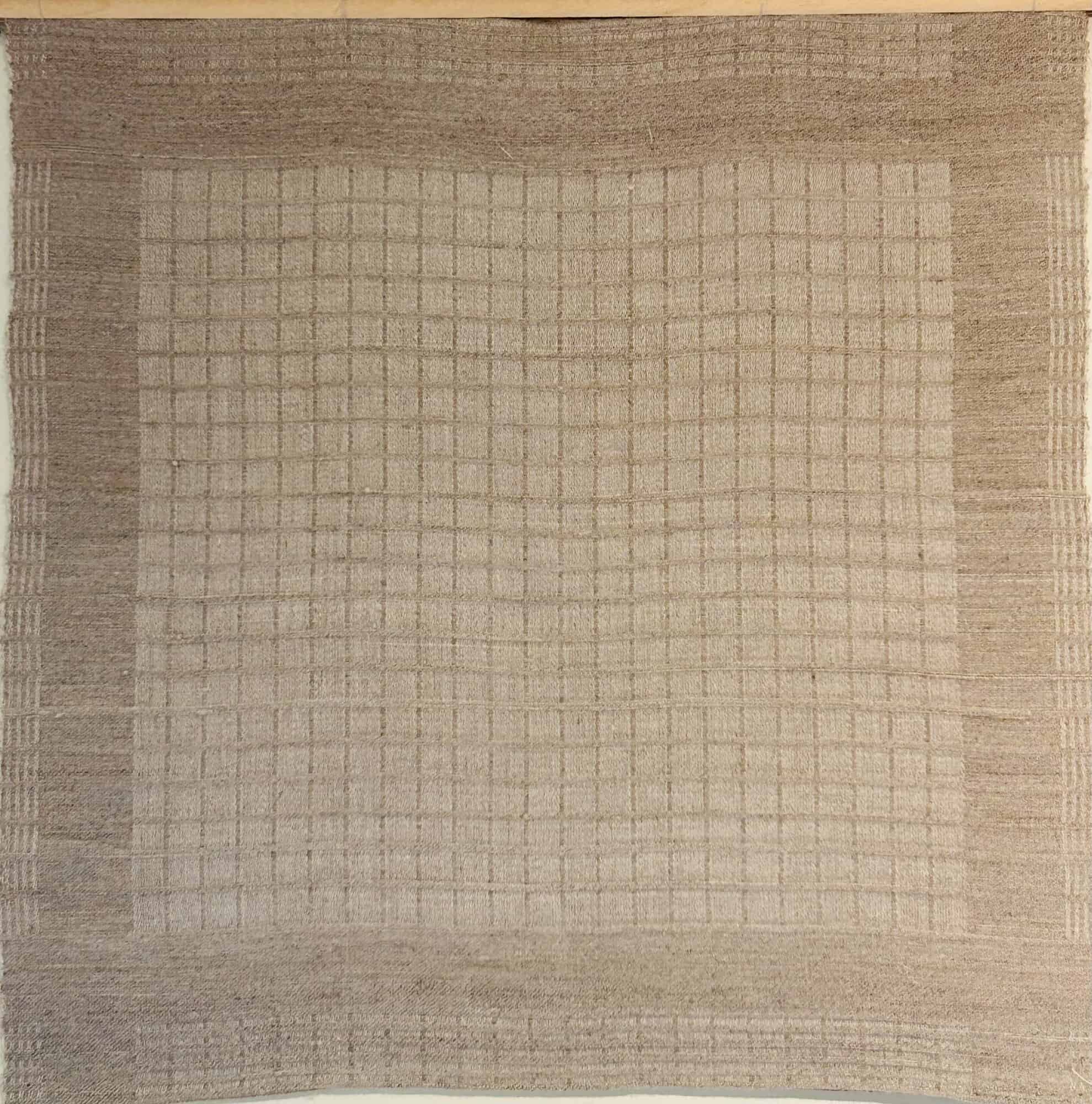
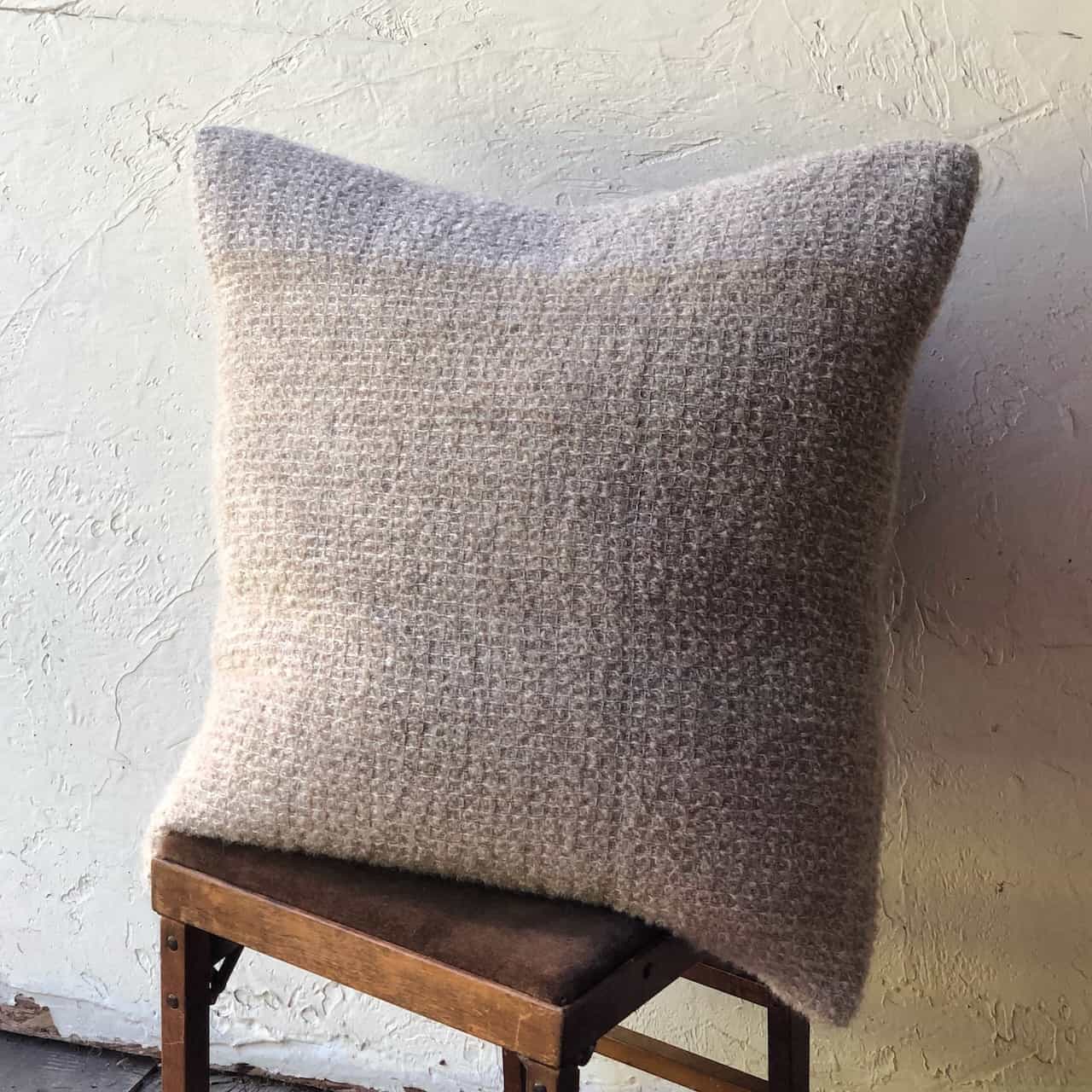
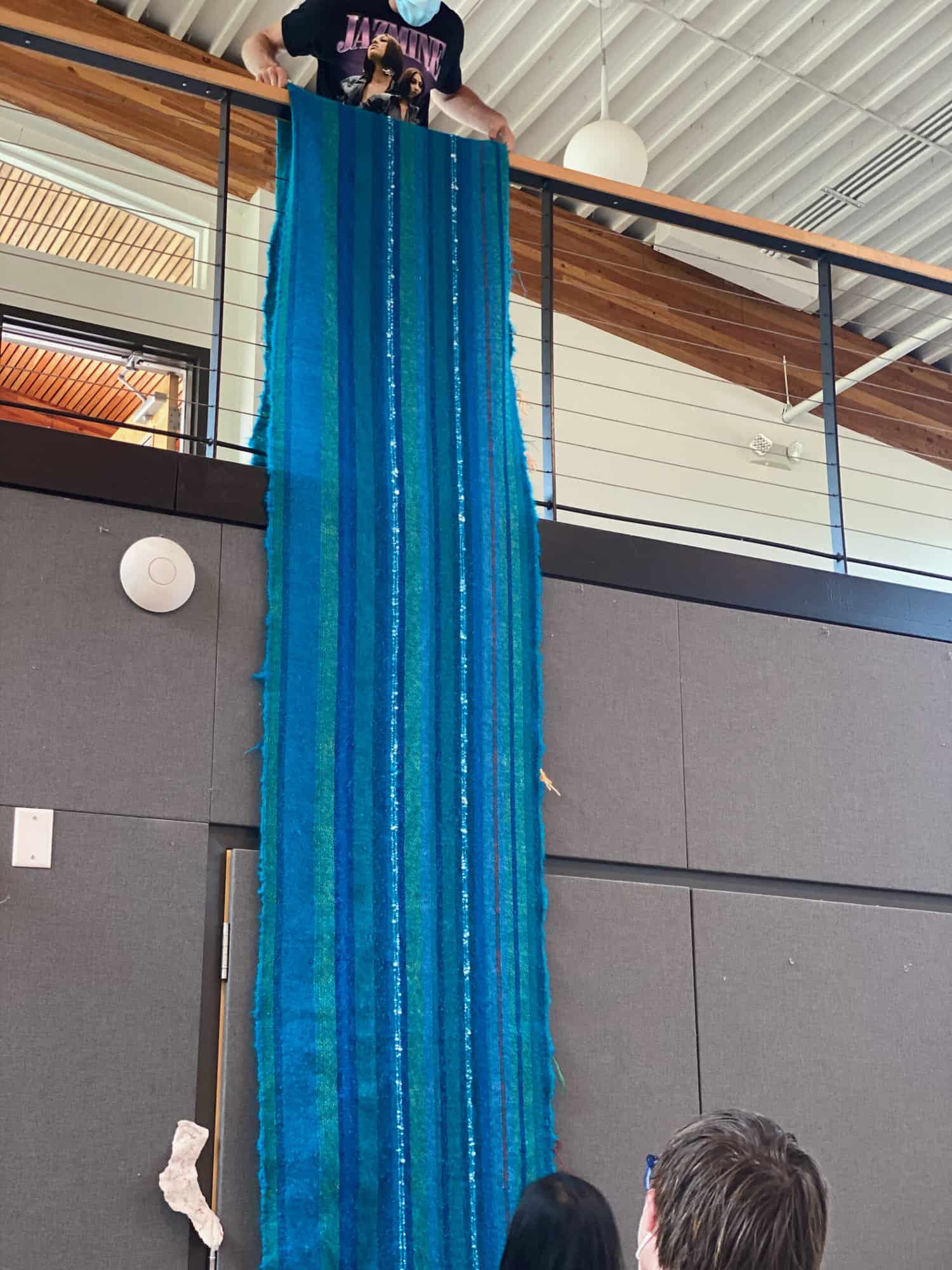
Dianne
Amazing work. I want to take my Dukagang diamond placemats and hide. Is there a family connection with the Hill Institute?
Elisabeth Hill
You and me both!!
No family connection – although as I was investigating I wished that there were. Samuel L. Hill was one of those amazing guys who seems to have been a time traveler in his ahead-of-his-time notions. He invented a way to spin silk fine enough for sewing thread, he was an abolitionist who discriminated against no race, ethnicity or religion among his employees. He founded and funded the first free kindergarten in the US, and he sold Sojourner Truth her house near his in Florence, MA. All that on top of founding the Hill Institute where I got my Master Weaver certification . . . I wish he was my great-grandpa!
Brian McCullough
In searching the web for family, I found your last comment about Samuel L. Hill and laughed out loud. You see, he is my great-great-grandfather! My paternal grandmother, Marion (Hill) McCullough, was his granddaughter. Thank you for recognizing the scope and reach of his achievements.
Elisabeth Hill
WOW! Thanks for the comment Brian, and I was just telling a group at Rhode Island School of Design about Hill Institute and the amazingly progressive/philanthropic/community-minded founder. People had never heard about Samuel L. Hill, but to the weavers of Western Massachusetts he’s a hero!
Claire
Woweee! look at that gorgeous and innovative cloth! I was reading this post on my phone but had to get up and put the computer on so I could get a better look.
The lady I bought my loom from wove a double corduroy rug which she showed me (and also pointed out the relevant section in Collingwood) when I was saying how I would not want to make a pile rug with all those rya knots. Now that I have a mountain of rug wool (and an endless source from the stash of another weaver hehe), I might just have to give it a go 😀
Elisabeth Hill
Okay – virtual DC club. It may be virtual because we will share online and it may be virtual because it may stay in our imaginations, but I will share any DC info, images and insight that come my way:)) Good back and forth on Weavolution on DC:
http://weavolution.com/forum/weaving/has-anyone-tried-making-real-corduroy-fabric-loom-18999
Claire
Thanks for that link, after I finish my current rug I’ll see about doing a sample for DC to see what it’s all about.